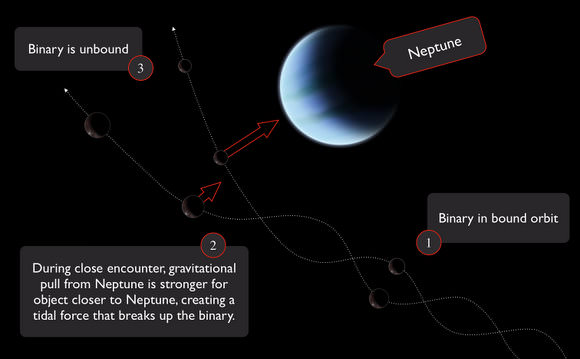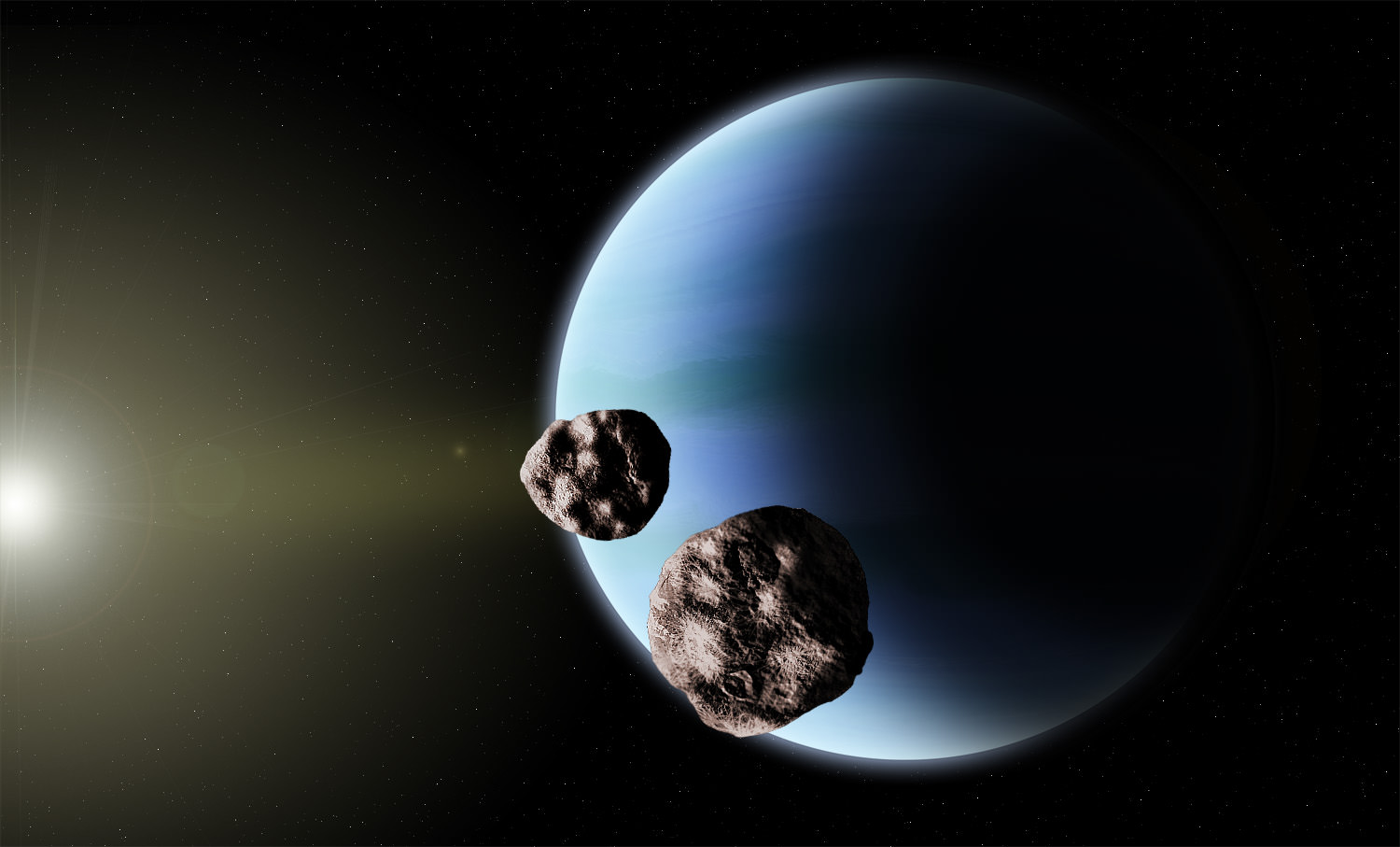[/caption]
A very popular explanation for the dynamical evolution of our solar system is being challenged by a new model that takes the blame away from Neptune for knocking a collection of planetoids known as the Cold Classical Kuiper Belt out to their current, distant home. PhD student Alex Parker from the University of Victoria in British Columbia, Canada presented evidence showing that the large population of binary objects in the Kuiper Belt gives witness to a different series of events than the Nice Model – which says Neptune’s migrations were responsible for a sending KBO’s into chaotic orbits. “Kuiper binaries paint a different picture,” Parker said during a press briefing at the American Astronomical Society’s Division of Planetary Sciences meeting this week. “I should title my talk as ‘Neptune not guilty of harassment’ or perhaps more accurately, “Planet Neptune acquitted of one count of harassment.’”
The Nice Model holds that the objects in the scattered Kuiper Belt were placed in their current positions by interactions with Neptune’s migrating resonances. Originally, the Model says, the Kuiper belt was much denser and closer to the Sun, with an outer edge at approximately 30 AU. Its inner edge would have been just beyond the orbits of Uranus and Neptune, which were in turn far closer to the Sun when they formed. As Neptune migrated outward, it approached the objects in the proto-Kuiper belt, capturing some of them into resonances and sending others into chaotic orbits.
But the survey of the Kuiper Belt being done by Parker and his thesis supervisor Dr. J. J Kavelaars (Herzberg Institute of Astrophysics), which has been running for a decade, tells a different story. “Thirty per cent of Kuiper Belt Objects are binaries, some in very wide orbits around each other in a slow waltz, weakly bound to their partners,” Parker said. “These binaries should have been destroyed if the Kuiper Belt Objects were thrown out of solar system.”
Since binaries are extremely common in the Kuiper Belt, they are useful tools for astronomers, said Parker. “Pluto and Charon are the most famous of these binaries and since their orbits can be affected by their environment, we can use them to test what the interplanetary environment is like and what it was like in the past.”

Using computer simulations, the researchers determined that many binary systems in part of the Belt would have been destroyed by the manhandling they would have experienced if Neptune did indeed move the Kuiper Belt to its current location.
The survey characterizes the orbits of these binaries and found that many are extremely wide – the widest one is about 100,000 km – and they are very delicate. “Because they are so weakly bound they can be upset by collisions from small objects peppering the KBOs,” said Parker, “and they would not be there today if the members of this part of the Kuiper Belt were ever hassled by Neptune in the past.”
Additionally, the current environment of the Kuiper Belt does not lend itself to the creation of these binaries, so they have been interacting with each other for a very long time. The research done by Parker and his colleagues suggest that the Kuiper Belt formed near its present location and has remained undisturbed over the age of the solar system.
The new model also solves the missing mass problem for the Kuiper Belt, Parker said. “The Nice Model – as well as all the other models of the formation of the Kuiper Belt — suggests its density was much higher so the binaries could be generated, but we don’t see that density today.”
The Cold Classical Kuiper Belt lies in a very flat ring between 6 and 7 billion kilometers from the Sun, and contains thousands of bodies larger than 100 kilometers across. The Kuiper Belt is of special interest to astrophysicists because it is a fossil remnant of the primordial debris that formed the planets, said Parker. “Understanding the structure and history of the Kuiper Belt helps us better understand how the planets in our solar system formed, and how planets around other stars may be forming today.”
Read the team’s paper: “Destruction of Binary Minor Planets During Neptune Scattering,” Alex H. Parker, JJ Kavelaars
Sources: DPS meeting press briefing, DPS abstract, University of Victoria press release.


You’re not going to believe this but I’m 70% of the way through writing a musical composition inspired by neptune’s intrusion into the kuiper belt…
“Thirty per cent of Kuiper Belt Objects are binaries”
I believe this should be thirty percent of Cold Classical Kuiper Belt Objects are binaries. There are a number of other instances where Kuiper Belt is being used where the paper is referring only to the cold component of the belt.
Interesting. But the Nice models predict many more features, is compatible with exoplanetary systems predicted migrations, and it is unlikely that the planets originally aggregated at stable orbits. Puzzling all the same.
“The new model also solves the missing mass problem for the Kuiper Belt, Parker said.”
The missing mass problem as I understand it: The bodies inhabiting the Kuiper Belt are too large, >100km, to have formed there via accretion of colliding objects if the disk always had its current density therefore it must have been much more massive when these objects formed and most of that mass is now missing.
Parker claims these objects could not have been moved from the denser environment closer to the sun without breaking up the binaries so they must have formed at the current distance.
Is he claiming that these objects actually did form in this lower density environment via another mechanism and that the mass is not actually missing?